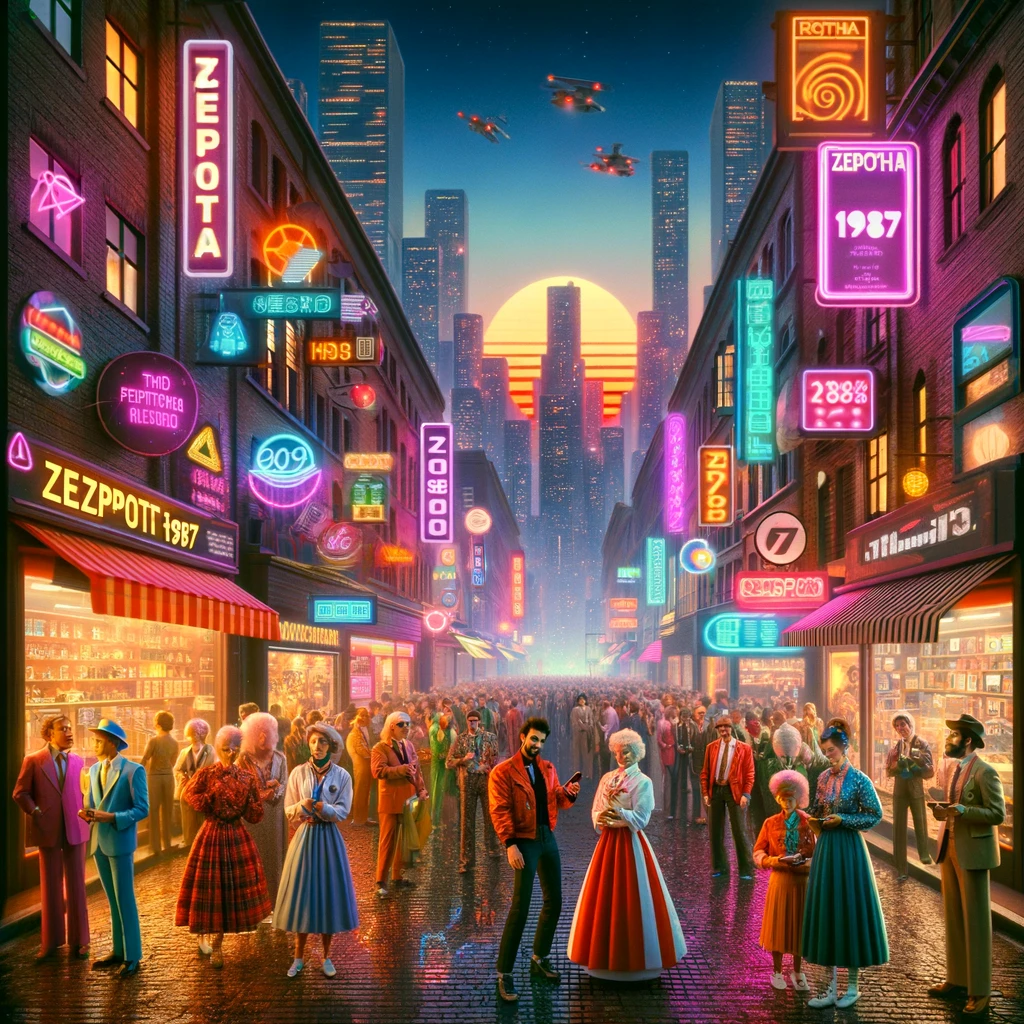
TikTok, a platform renowned for its quick and vast dissemination of trends, has once again captured the digital zeitgeist with the Zepotha 1987 trend. This phenomenon, like many before it, showcases the app’s uncanny ability to breathe life into obscure or niche references, turning them into global sensations overnight. Unlike straightforward dance challenges or lip-syncs, the Zepotha 1987 trend dives deep into the nostalgia and aesthetics of a bygone era, specifically the year 1987, with a twist that blends fiction with reality, engaging users in a unique form of storytelling and creative expression.
The Zepotha 1987 trend, at its core, is a faux-nostalgic dive into a fictional universe that imagines the trends, fashion, music, and overall cultural vibe of the year 1987 in a parallel world named Zepotha. Participants in this trend create content that could belong to this imagined year, often incorporating elements that are both authentically ’80s in style and bizarrely anachronistic, thus blending reality with fantasy. This includes creating music tracks that mimic the era’s sound, designing fashion looks that could belong on the streets of a 1987 Zepotha, or inventing fictional pop culture moments, complete with VHS-quality footage and era-appropriate slang.
The appeal of the Zepotha 1987 trend lies in its open invitation for creativity and escapism. TikTok users are drawn to the opportunity to craft their own contributions to this alternate history, whether by showcasing their musical talents, fashion design, or video editing skills. The trend has become a canvas for a wide range of artistic expressions, allowing for a communal construction of a shared, albeit fictional, past. This collective imagining is reminiscent of other internet phenomena where users collaboratively build complex lore and narratives, but Zepotha 1987 stands out for its deep dive into the aesthetic and cultural specifics of the late 20th century.
Moreover, the trend taps into a broader cultural fascination with the 1980s, a decade often romanticized for its distinctive and bold style, groundbreaking music, and the rise of digital culture. By inviting TikTok users to reinterpret these elements through the lens of a fictional world, the Zepotha 1987 trend not only serves as an homage to the era but also as a commentary on the nature of nostalgia itself. It explores how modern perceptions of the past are filtered through the lens of current cultural and technological trends, thus offering a meta-narrative on the act of reminiscing.
The Zepotha 1987 trend also reflects TikTok’s unique ecosystem, where trends evolve rapidly and organically, driven by community engagement and creativity. Unlike platforms that rely heavily on curated content or celebrity influencers, TikTok’s trends often emerge from the grassroots level, propelled by the creativity and participation of its users. The Zepotha 1987 trend exemplifies this, having grown from a niche interest into a widespread movement without the backing of traditional media or marketing campaigns. It showcases the platform’s power to democratize content creation, allowing anyone with a creative vision to influence global digital culture.
The Zepotha 1987 trend on TikTok represents more than just another fleeting digital craze. It embodies the platform’s capacity to foster imaginative storytelling and collective creativity, serving as a testament to the enduring appeal of the 1980s while offering insights into the ways in which nostalgia and digital culture intersect. Through the lens of this trend, TikTok users not only pay tribute to the past but also engage in a playful reimagining of history, highlighting the platform’s role as a vibrant hub of cultural innovation.